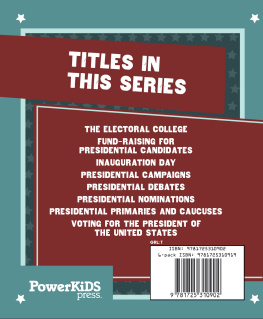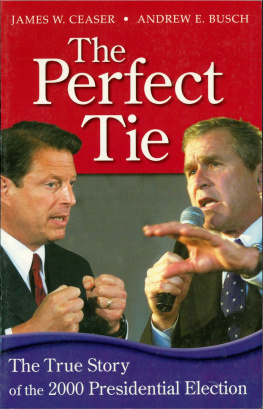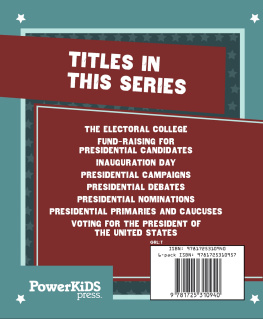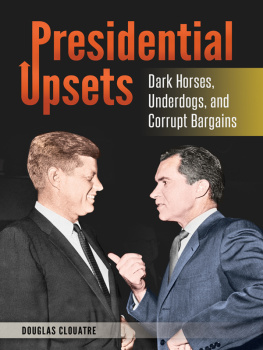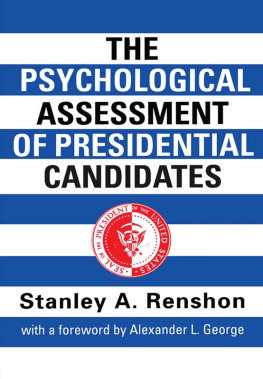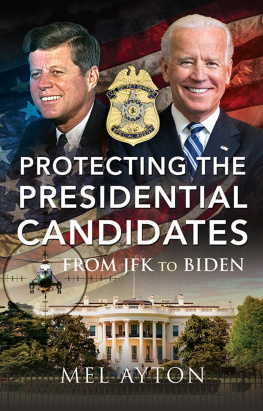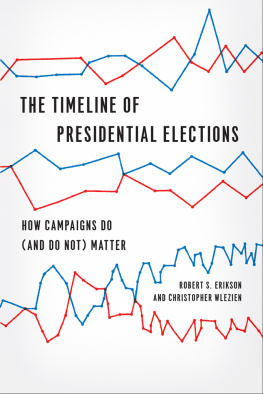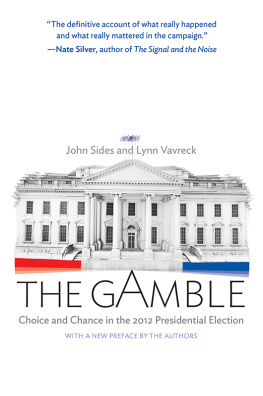
Published in 2020 by The Rosen Publishing Group, Inc.
29 East 21st Street, New York, NY 10010
Copyright 2020 by The Rosen Publishing Group, Inc.
All rights reserved. No part of this book may be reproduced in any form without permission in writing from the publisher, except by a reviewer.
First Edition
Editor: Rachel Gintner
Book Design: Tanya Dellaccio
Photo Credits: Cover, pp. (both) Wally McNamee/Corbis Historical/Getty Images.
Cataloging-in-Publication Data
Names: Corso, Phil.
Title: Presidential debates / Phil Corso.
Description: New York: PowerKids Press, 2020. | Series: U.S. presidential elections: how they work | Includes glossary and index.
Identifiers: ISBN 9781725310902 (pbk.) | ISBN 9781725310926 (library bound) | ISBN 9781725310919 (6 pack)
Subjects: LCSH: Presidents--United States--Election--Juvenile literature. | Elections--United States--Juvenile literature. | Representative government and representation--United States.
Classification: LCC JK1978.C66 2020 | DDC 324.6--dc23
Manufactured in the United States of America
CPSIA Compliance Information: Batch # CWPK20. For Further Information contact Rosen Publishing, New York, New York at 1-800-237-9932.
CONTENTS
A WAR OF IDEAS
In the United States, voters have the ability to choose who leads the country through a process known as elections. But how do they know who to vote for? This is where presidential debates become important.
Throughout the campaign season, candidates typically step onto a debate stage several times to talk about important issues, answer voter questions, and share their visions for the future.
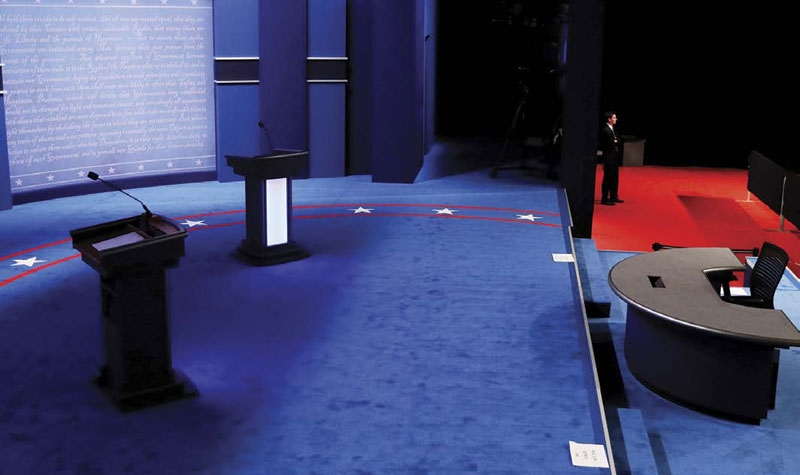
Television opened the door for American voters to meet their presidential candidates through publicized, far-reaching debates.
A NEW PROCESS IN AN OLD COUNTRY
DEBATES ARE STILL A RELATIVELY NEW IDEA IN AMERICAN . PRESIDENTIAL CANDIDATES USED TO THINK IT WAS A BAD IDEA TO DEBATE THEIR OPPONENTS IN PUBLIC. IT WAS NOT UNTIL THE YEAR 1960, WHEN A TELEVISED DEBATE BETWEEN DEMOCRATIC SENATOR JOHN F. KENNEDY AND REPUBLICAN VICE PRESIDENT RICHARD NIXON PUT THE PROCESS ON TELEVISION. EVEN THEN, IT WAS ANOTHER 16 YEARS UNTIL THE NEXT TELEVISED PRESIDENTIAL DEBATE.

Debates start in the primary phase, which determines who will lead each party in the general election. After the primary elections, the leaders of each party running for president and vice present debate each other.
But it has not always been done this way. The presidential debate system became a more consistent tradition over recent decades as has allowed them to be televised.
WHO ENTERS THE RING?
Presidential debates start long before the general election, which takes place every four years in November. Candidates running for president face off in primary debates first, and then the winners of each partys primary election will debate. Each presidential candidate chooses a running mate to serve as their vice president, and these nominees debate as well.
The Commission on Presidential Debates uses a set of rules to assist in picking whos allowed onto the debate stage. In order to be included, candidates must be on the votes. Thats the number of votes they must win in the general election if theyre to win the White House. They also must gain at least 15 percent of the publics support in five major national polls.

The debate format starts in the primary election stage of the electoral process and continues until each party has its winner.
DEBATE TRADITIONS
The American tradition of debates has developed over the centuries since the countrys founding. In 1858, for example, Abraham Lincoln challenged Senator Stephen Douglas to seven debates in Illinois. One man gave an hourlong introduction, the other responded for 90 minutes, and the first man closed for another 30 minutes.
Debate traditions have come a long way since then. In modern America, the debate process begins about one year before the general election. Candidates seeking their partys presidential nomination go on television and debate each other for the first time. After each party chooses its candidate, the winners and their running mates debate each other in general election debates.
The events follow different styles, but always focus on some of the countrys most important issues.
PATH TO THE PRESIDENCY
PRESIDENT JIMMY CARTER REFUSED TO DEBATE REPUBLICAN RONALD REAGAN AND INDEPENDENT JOHN ANDERSON IN 1980. HE FELT THAT BY INCLUDING AN INDEPENDENT CANDIDATE, THERE WOULD BE TOO MANY PEOPLE DEBATING.

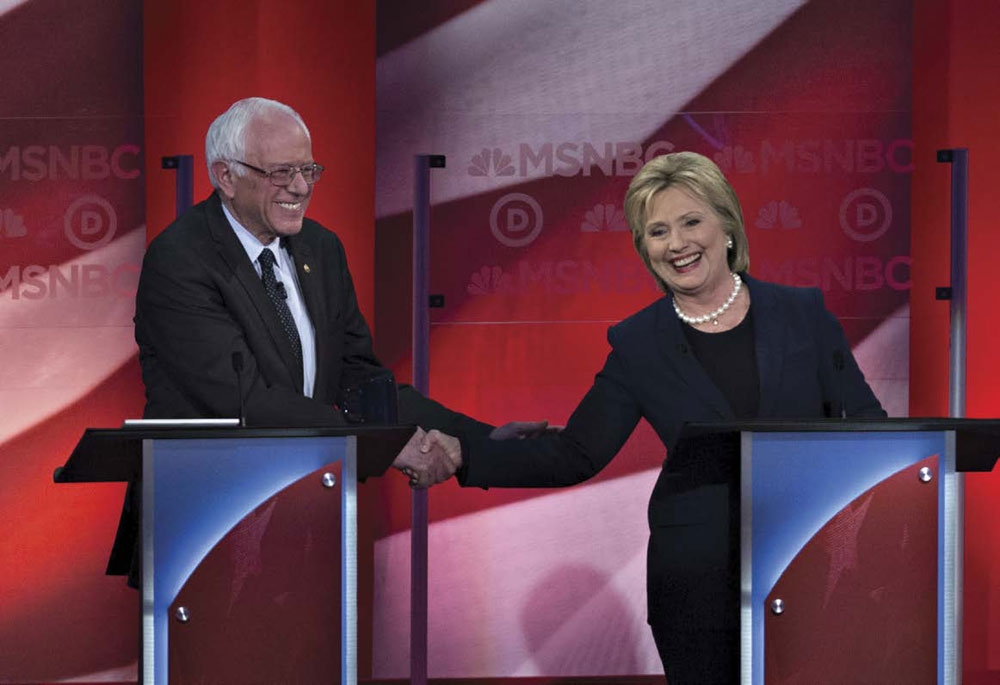
Democratic candidate for president Hillary Clinton, right, shakes hands with challenger Bernie Sanders during a 2016 presidential primary debate.
DEBATE TIMELINES
While Election Day is not until November, the presidential and vice presidential debate process starts much earlier.
In recent history, the first presidential debates have usually taken place sometime during the month of September, about two months before voters head to the polls. A second debate usually follows in the beginning of October, and another one occurs near the end of the month, just before the November election hits. Vice presidential candidates tend to square off only once, usually in October.
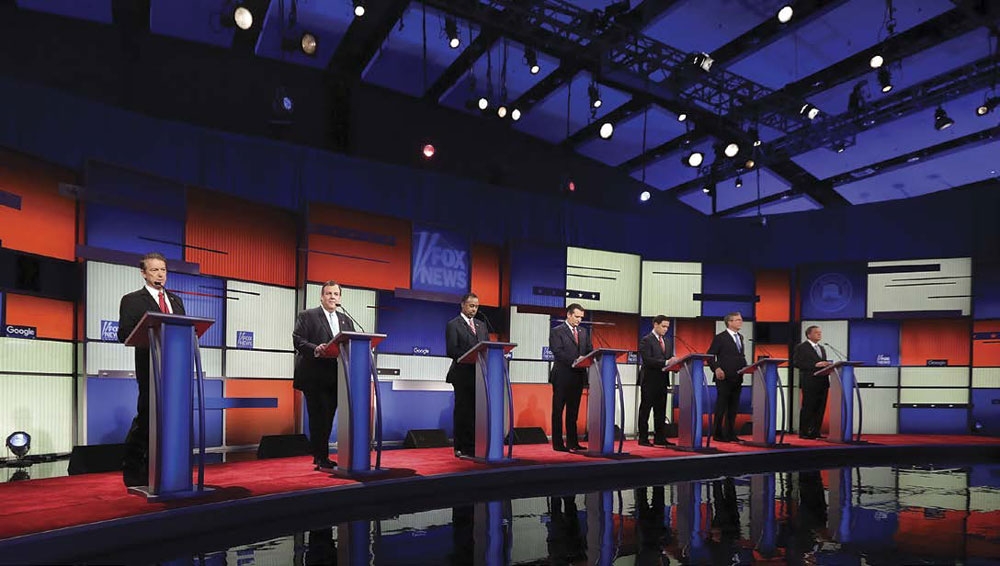
Some of the candidates seeking the Republican nomination for president in the 2016 election included Ted Cruz, Marco Rubio, Jeb Bush, and John Kasich, pictured here at a debate in January 2016.
TECHNOLOGY AND DEBATING
THE 2008 PRESIDENTIAL DEBATES BETWEEN DEMOCRAT BARACK OBAMA AND REPUBLICAN JOHN MCCAIN OPENED A NEW DOOR INTO THE FUTURE OF DEBATING BY USING MODERN TECHNOLOGY IN NEW WAYS. IT WAS THE FIRST TIME PRESIDENTIAL CANDIDATES ANSWERED QUESTIONS THAT VOTERS SUBMITTED THEMSELVES ON SOCIAL MEDIA PLATFORMS LIKE YOUTUBE AND FACEBOOK. THAT TREND CONTINUED TO GROW IN THE 2016 PRESIDENTIAL DEBATES, WHEN VOTERS ALSO SUBMITTED QUESTIONS DIRECTLY TO THE CANDIDATES USING TWITTER.
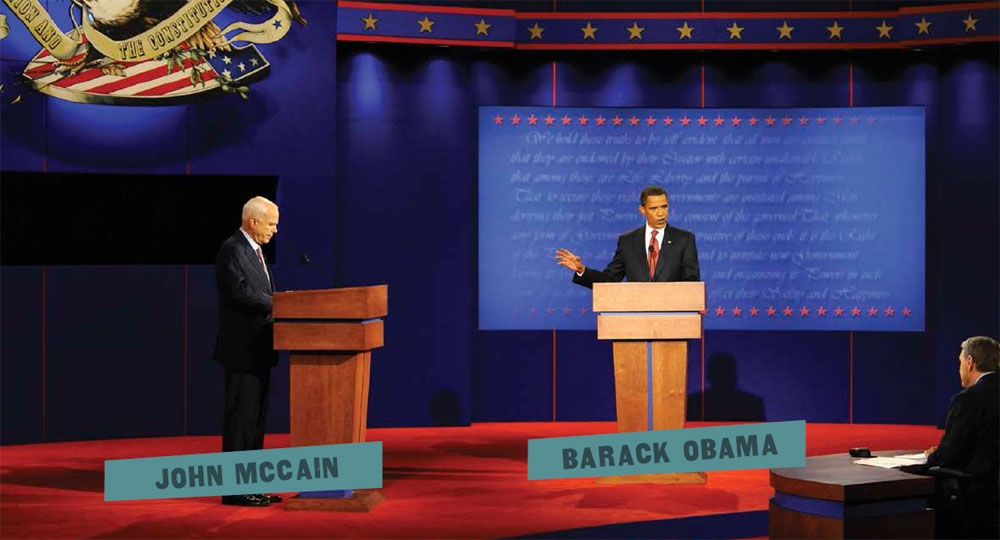
The primary debate process starts even earlier. In fact, the first major party primary debates start airing televised debates more than one year before Election Day. This gives voters time to pick which candidate they want to go onto the general election, and that is decided by the summertime.
THE BIG LEAGUES
Organizing presidential debates has not always been easy. The groups who controlled the scheduling and formatting of the events have changed over the decades.
After the Kennedy and Nixon debate, the United States went 16 years without a public debate. But that changed in 1976 when a group called the League of Women Voters stepped in to three debates between Democrat Jimmy Carter and Republican Gerald Ford. They also sponsored a vice presidential debate between Democrat Walter Mondale and Republican Bob Dole that same year.
Next page
